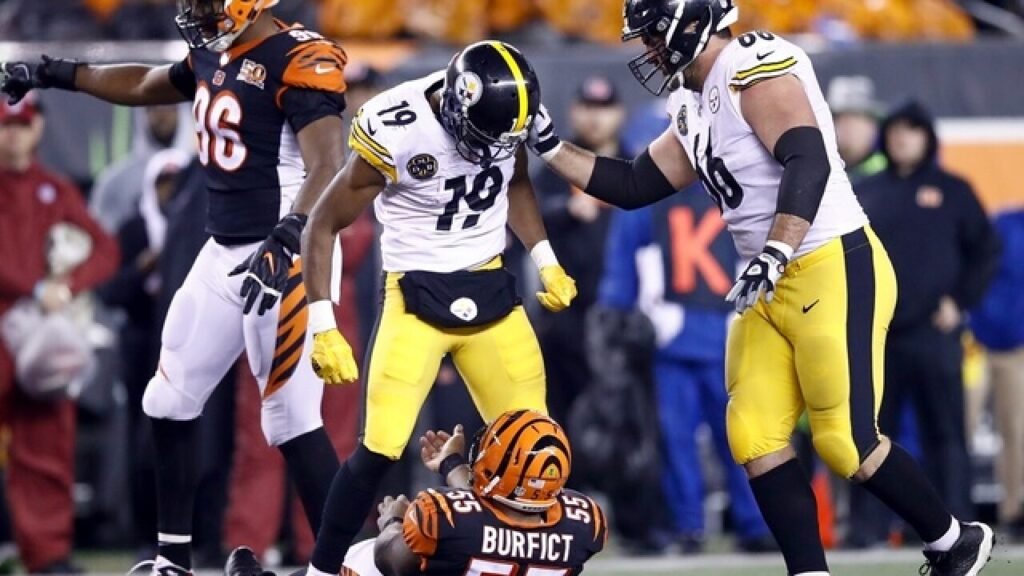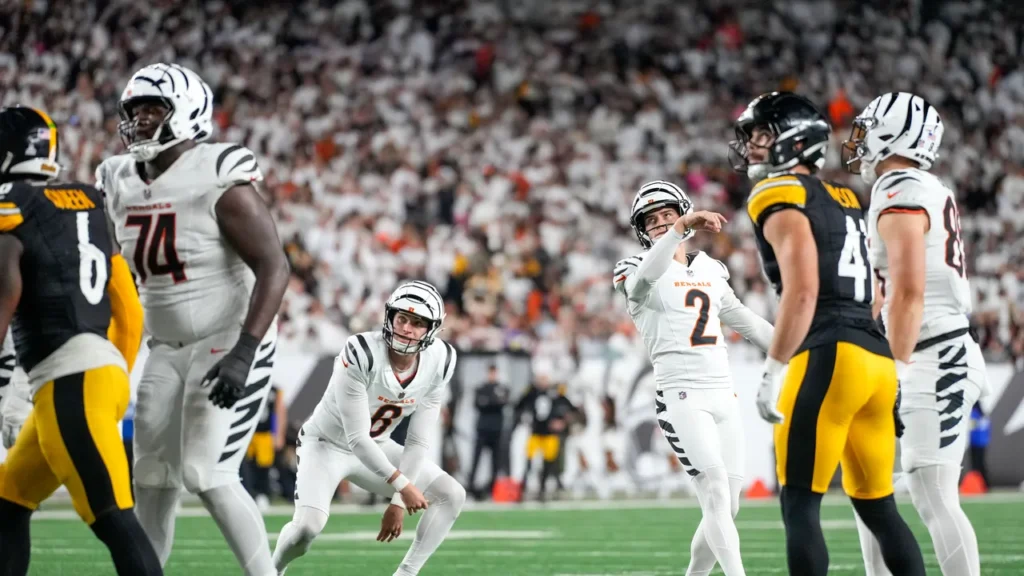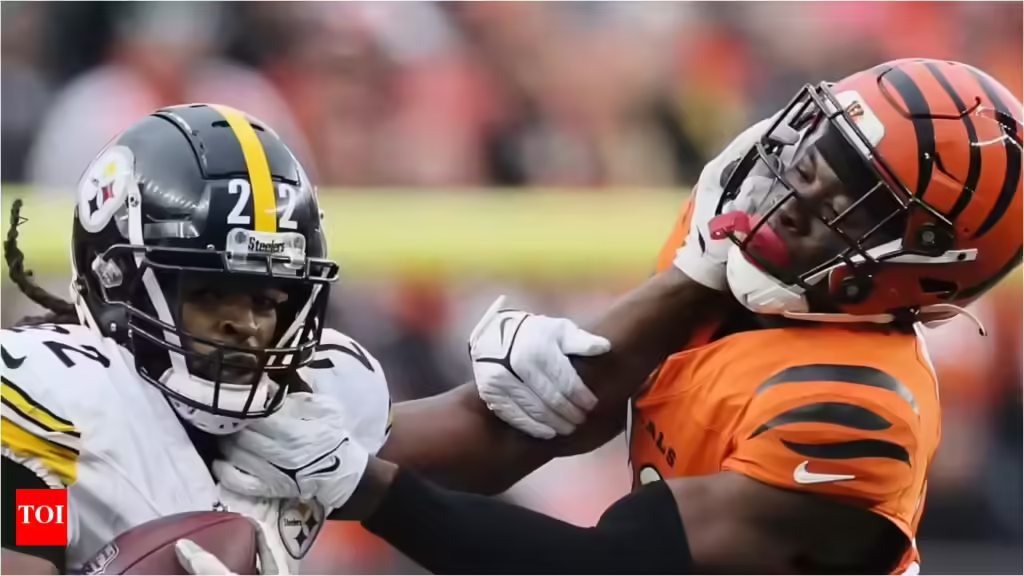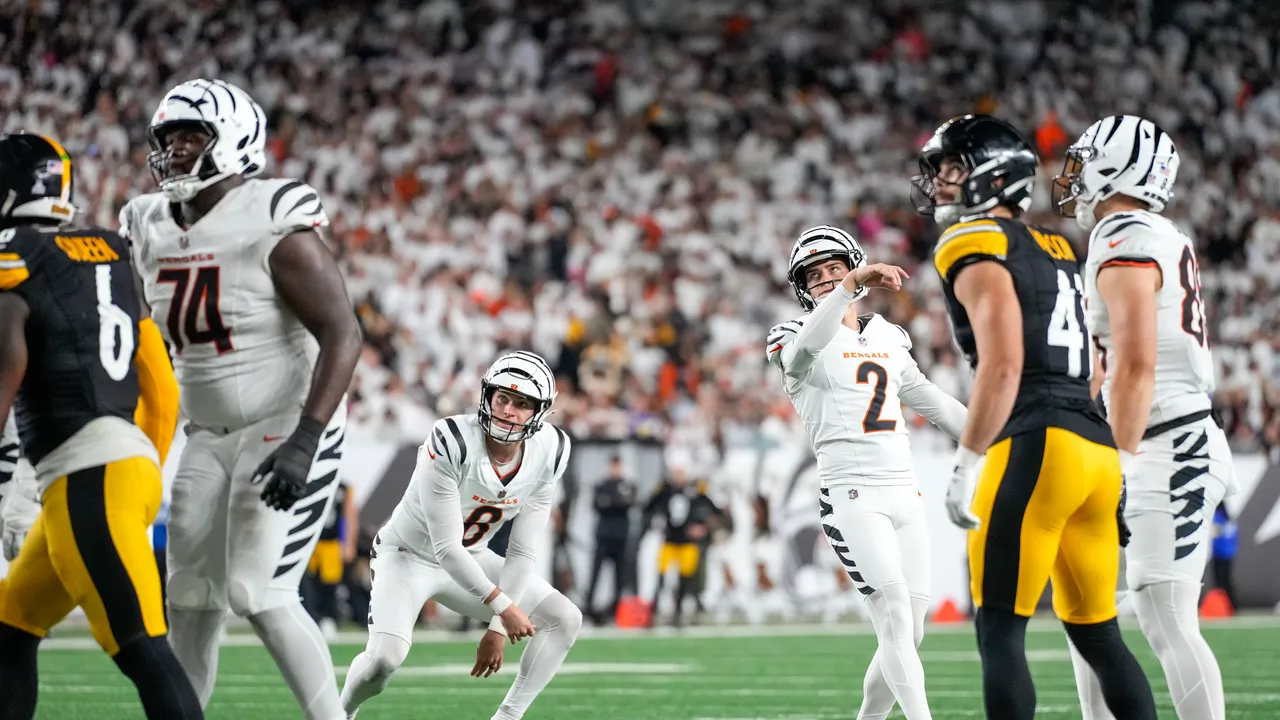Table of Contents

This rivalry is among the most intense in the NFL. These two teams, both members of the AFC North division, meet twice a year and each matchup is filled with passion and history. This blog is covered by zainblogs. Cincinnati has become a formidable rival in recent years, despite Pittsburgh’s dominance. It’s no longer about bragging rights. The rivalry has real playoff implications for both players and fans. The rivalry between the Pittsburgh Steelers vs. Bengals and Cincinnati Bengals stands as one of the most intense and compelling matchups in the NFL. Rooted deeply in the competitive spirit of the AFC North division, these two teams have clashed for over five decades.
Historical Origins
The Steelers and Bengals rivalry started on 2 November 1970 when the Steelers vs. Bengals defeated the Bengals by 21-10. Since then, both teams have played more than 110 matches. Pittsburgh leads the series by 71-41 including two playoff wins. The rivalry has been dominated by Pittsburgh for decades, particularly during the 1970s, 2000s, and when the Steelers were perennially competitive. Cincinnati’s brilliance in the 1980s, and more recently during the Joe Burrow era has added spice to the AFC North rivalry. The rivalry between the Pittsburgh Steelers and Cincinnati Bengals dates back to November 2, 1970, when the two teams first met as part of the newly formed AFC Central Division.
The Steelers vs. Bengals won that initial game 21–10, setting the tone for what would become a fierce, long-standing rivalry. While the Bengals were a relatively new franchise founded in 1968 by Paul Brown the Steelers were an established team still searching for consistent success at the time. In the 1970s, Pittsburgh began its rise to dominance, capturing four Super Bowl titles behind a legendary defense known as the “Steel Curtain.” During this time, the Bengals struggled to keep pace, often finishing behind Pittsburgh in the standings. However, the 1980s saw the Bengals begin to gain ground with multiple playoff appearances and a Super Bowl run in 1988, injecting new competitiveness into the rivalry
Key Rivalry Moments
The 2005 wild card game saw one of the most controversial moments of rivalry history when Bengals QB Carson Palmer took a low blow on the first play. The Steelers vs. Bengals won 31-17 but the rivalry was forever changed. Bitterness, physicality and retaliation were common themes. The Steelers vs. Bengals rivalry has produced some of the most unforgettable and emotionally charged moments in NFL history. One of the earliest defining games came during the 2005 AFC Wild Card, when Bengals quarterback Carson Palmer suffered a serious knee injury on the opening play after a low hit by Steelers’ lineman Kimo von Oelhoffen.
Another notorious clash occurred in the 2015 Wild Card game, which ended in chaos. Bengals linebacker Vontaze Burfict delivered a devastating hit to Steelers vs. Bengals receiver Antonio Brown, drawing a penalty. Moments later, Adam Pacman Jones committed another penalty, setting up a game-winning field goal for Pittsburgh. The Bengals had victory within reach, but undisciplined play cost them dearly in what remains one of the rivalry’s most controversial endings. In more recent years, the 2021 blowout win by the Bengals marked a major shift, signaling the rise of Joe Burrow and Cincinnati’s new era.
2015 Playoff Brawl
2015 Wild Card Game was a thrilling showdown. In a chaotic end, penalties on Vontaze “Pacman” Jones and Vontaze “Burfict gave Pittsburgh the yards needed to kick a winning field goal. Burfict’s strike on WR Antonio Brown is still a point of contention and has solidified the animosity between the two teams. The 2015 AFC Wild Card game between the Steelers vs. Bengals and Bengals is one of the most infamous and emotionally charged moments in NFL playoff history often referred to as the “2015 Playoff Brawl.” Played on January 9, 2016, in Cincinnati, the game was marked by raw emotion, brutal hits, and costly penalties that ultimately swung the result in dramatic fashion.
With under two minutes left, the Bengals led 16–15 and looked poised to win their first playoff game in 25 years. But chaos soon erupted. Steelers vs. Bengals linebacker Ryan Shazier forced a fumble from Bengals running back Jeremy Hill, giving Pittsburgh new life. Then, as Steelers QB Ben Roethlisberger re-entered the game injured, Bengals linebacker Vontaze Burfict delivered a vicious helmet-to-helmet hit on wide receiver Antonio Brown, drawing a 15-yard penalty. In the aftermath, Adam Pacman Jones committed an additional unsportsmanlike conduct penalty during the skirmish. The back-to-back penalties moved the Steelers into field goal range, and Chris Boswell converted the game-winning kick, handing Pittsburgh an 18–16 victory.
Tactical and Coaching Dynamics
This rivalry is also a showcase for elite coaching and the evolution of strategy. Mike Tomlin has a defensively-minded, disciplined style that often clashes with Cincinnati’s creative offensive approach. The Steelers vs. Bengals are heavily reliant on blitzes, zone disguises and controlling the clock. Under Zac Tayler the Bengals focus on spreading out, using tempo and maximizing mismatches. The stylistic differences can make games unpredictable. Pittsburgh usually wins by forcing Bengals to make mistakes and stifling their pass game. Cincinnati usually wins by exploiting Pittsburgh’s defense and winning the battle of time-of possession. The tactical and coaching dynamics in the Steelers vs. Bengals rivalry add a rich layer of complexity to each matchup.
In contrast, the Bengals especially in the Joe Burrow and Zac Taylor era have leaned into a more modern, pass-heavy approach. Taylor’s offensive schemes emphasize pre-snap motion, quick reads, and spreading the field with dynamic receivers like Ja’ Marr Chase and Tee Higgins. Cincinnati’s offense thrives on mismatches, rhythm passing, and tempo, forcing the Steelers’ defense to adjust on the fly. Each matchup becomes a chess game between Tomlin’s defensive adjustments and Taylor’s creative play-calling. Coaches often prepare surprises specifically for this rivalry, knowing how familiar both sides are with each other’s tendencies. Fourth-down decisions, red zone play designs, and second-half adjustments are often the deciding factors.

Fans’ Reactions to the Game and their Emotional Weight
Steelers vs. Bengals for fans is more than just a football game. It’s also a fight for respect. Steelers’ fans are proud of their six Super Bowl victories and a dominating legacy. They expect to win. Bengals fans are often viewed as underdogs but take pride in beating their more decorated rivals. Each hit, touchdown or flag gets amplified. The stadiums are electrified, the message boards glow, and social media is a battleground. A win feels like a championship, and a defeat is painful.The emotional intensity of the Steelers vs. Bengals rivalry is never more evident than in the reactions of the fans.
On the other hand, Bengals fans carry the emotional burden of past underachievement and heartbreak. So, every victory over Pittsburgh especially recent ones in the Burrow era feels like a powerful act of redemption. Social media explodes with memes, trash talk, and heated debates after each game. Stadiums echo with chants, boos, and cheers that reflect decades of rivalry and bitterness. Fans live and breathe these matchups, often circling them on the calendar regardless of each team’s record. For many, it’s not just about playoff implications it’s personal. These games divide households, spark lifelong memories, and symbolize the deep-rooted identity of two football-loving cities.

FAQs
Q1: Which team has won the most games between the Steelers & Bengals in the past?
A. The Pittsburgh Steelers are 71-41 in the series, including postseason games.
Q2: How often have these teams played each other in the playoffs?
A. Two wins for Pittsburgh in the Wild Card Rounds (2005 and 2015).
Q3: Which game is the most controversial in the rivalry between the two teams?
A: In 2015, the Wild Card game was infamous for chaos, penalties that were late, and Burfict’s hit on Antonio Brown. This helped Pittsburgh to steal a victory at the last second.
Q4: Which players have the greatest impact on the rivalry between the two countries?
A: For Pittsburgh, Roethlisberger Polamalu Harrison. Burrow, Chase Ochocinco Burfict and Palmer (due his injury in 2005).
Q5: What has changed since the last few years in terms of rivalry?
A: Cincinnati has emerged as a serious threat to Pittsburgh, thanks to Joe Burrow and Zac Taylor. The games are more competitive, scoring higher, and unpredictable.
Conclusion:
The Steelers and Bengals rivalry tells a story of power shifts. It is also a tale about clutch plays, emotional stakes, and brutal defense. Cincinnati’s recent revival has created a balance, and each game is a must-watch. The future of the rivalry will be as exciting as the past, with young stars such as Burrow, Chase and Najeeh Harris leading the way, as well as seasoned veterans Aaron Rodgers, Joe Flacco and others making surprising contributions. Steelers vs. Bengals is one of the most exciting rivalries in the NFL. It will continue to be heated, unpredictable and memorable for many years to come.








